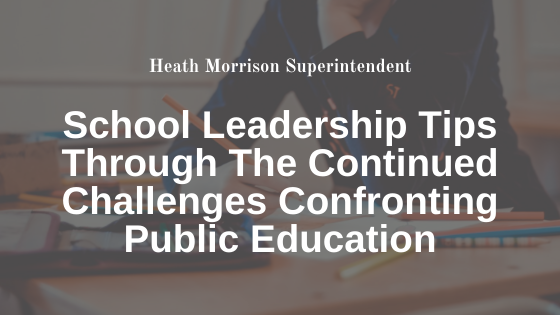Over the summer, as school districts were preparing to re-open campuses and welcome back students for the 2021-22 school year, there was widespread optimism across the country that this school year would be less challenging than 2020-21, which was significantly impacted by the impact of COVID-19. With vaccines available and COVID positivity rates decreasing, there was a sense that this year would transition back to a sense of “normalcy” for students, staff and parents.
Unfortunately, COVID conditions deteriorated quickly across the country. The Delta variant hit with ferocity, and large numbers of students and staff needed to be quarantined during the first few weeks of school. It was not uncommon for students to report that they hadn’t met their permanent teacher until well into the first grading period. These disruptions were occurring as school districts received state assessment results from Spring 2021, and most were reporting huge learning losses commonly known, commonly referred to as the “COVID slide”. During this time, school board meetings across the country experienced huge volatility as various community members expressed anger and concern regarding issues ranging from responses to the pandemic to issues around curriculum decisions.
School leaders also experienced trauma and social-emotional impacts of the pandemic with staff and students
This was evident with shortages of bus drivers, food service workers and substitutes. For children, there was an increase in the reported amount of disruptive behavior and willingness to engage in unfortunate activities, like “Tik Tok Challenges” on social media. And, sadly, there was a sobering reminder of the ever-present threat of school violence with the tragedy in Michigan.
Any one of these challenges would prove difficult for even the most experienced school leaders to confront. Compounded together, they have proved to be overwhelming, leading to historic amounts of resignations of superintendents, principals and teachers across the country.
Unfortunately, none of these challenges are subsiding with the new year; especially as the Omicron variant now has COVID rates spiking once again across the country. Common responses, like masks, are limited based on various state directives, but school leaders must continue to emphasize physical distancing, frequent hand washing and requiring staff and students to stay at home when they are sick. School districts should also support testing for staff and students and be transparent in sharing infection rates with the community.
Here are some other considerations school leaders should thoughtfully examine as they grapple with various issues confronting their communities:
- Dealing with culture wars is nothing new to school leaders. If this is an issue that has surfaced in your school community, be more proactive in sharing how curriculum is chosen and ensuring classroom materials and library books meet state and district standards.
- Many school districts have been fortunate to have received additional federal funding through the American Rescue Plan and other legislation recently enacted that included funds for COVID relief. Directing those funds to support the social and emotional needs of students and staff is not only allowable; it is a particularly effective use of these monies.
- School leaders always need to be vigilant about safety. Making sure that safety plans are up to date and all staff has been trained is a fundamental priority and ongoing obligation. Being proactive with training students on being responsible digital citizens may be a partial solution to the many challenges social media presents to schools today.
It is important to remember that as leaders, we don’t get to choose the challenges we face; only how we face them. While it is easy to focus on the various challenges schools are facing as we head into 2022, it is also important to remember that it was not so long ago when schools were completely shut down due to COVID, and all instruction was occurring virtually. Being realistic, while prepared to confront the challenges and maximize opportunities for students and teachers is incumbent on every school leader during this unprecedented era in public education.

